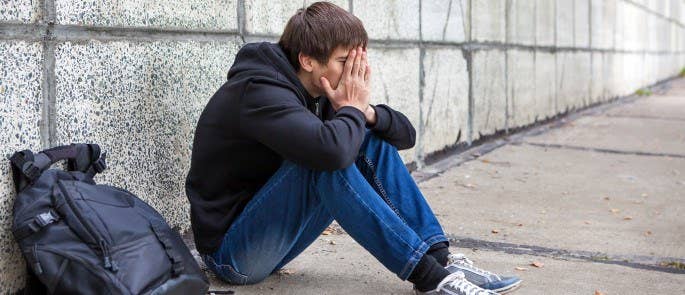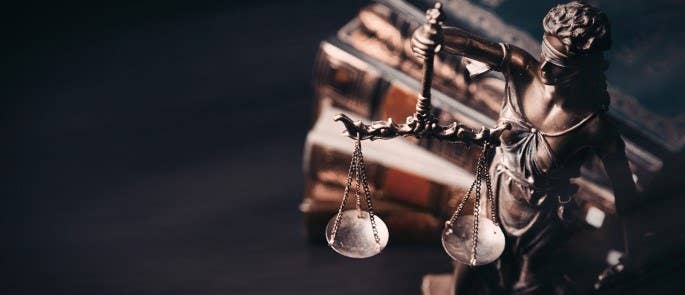How to Tackle Incel Culture in Schools
As someone who works in an education setting, you should receive regular safeguarding training and updates. The world is not static and safeguarding risks change and evolve over time. A concern that continues to grow is the rise of incel culture, and the risks it poses to young people – in some cases, leading to radicalisation and acts of terrorism. In this article, we will look at what incel culture is, why schools should be aware of the rise in incel culture, and provide guidance on how to spot the signs alongside tackling the risks.
What Does Incel Mean?
Incel stands for ‘involuntary celebate’ and is a term adopted by individuals in the incel community to describe themselves. The incel community is an overwhelmingly male (predominantly young, white male) online community.
Incel ideology centres around the notion that incels are denied sexual and romantic relationships, and that women are to blame for this. Women and girls are stereotyped, objectified and dehumanised within incel culture – they are seen as genetically inferior. At their most extreme, incels condone violence, including sexual violence, against women, and ocassionally sexually-active men, as ‘punishment’ for denying the incels sexual relationships (to which they believe they are entitled).

Incels believe that there is an inescapable hierarchy within society – based largely on physical attractiveness – and place themselves at the bottom of this. Tenuous links are sometimes made to theories relating to genetics and evolutionary psychology (for example, the idea of the ‘survival of the fittest’) to back up this theory of predetermined behaviour and circumstance. Some believe that women are all ‘programmed’ to want to ‘mate’ with alpha males, and will manipulate and deceive other men in order to do this.
Because incels believe that they are at the bottom of this perceived hierarchy, incel communications not only centre around rage and resentment directed against women and certain groups of men, but also include sentiments of self-loathing, worthlessness and hopelessness.
Incels who have ‘taken the black pill’ (we will look further at incel terminology later in this article) have accepted their perceived fate – they will always be inferior and at the bottom of the hierarchy that they believe exists.
Whilst self-reported research from the incel community shows that there are incels from all backgrounds, much incel ideology includes elements of racial hatred, alongside the characteristic misogyny. Black men are often targeted as they are perceived to be more successful with women, and links have been found to white supremacist ideologies.
The overlay between male supremacy and white supremacy, and its pervasiveness among young people presents huge challenges as the men’s rights movement increasingly acts as a slip road to the far right.
Youth Fear and Hope Report 2020, Hope Not Hate
The Manosphere
Incel subculture is part of a wider online community known as the manosphere. Anti-hate organisation, ADL, describes the manosphere as an ‘online morass of misogyny’. In addition to incel communities, the manosphere includes Pick Up Artists (PUAs), MGTOWs (Men Going Their Own Way) and Men’s Rights Activists (MRAs). The male-dominated collection of groups that make up the manosphere are united by sexist beliefs that women and feminism are to blame for problems within society. There is a shared narrative that men are victims and that feminism has hijacked society and denied them their rightful, dominant position.

Although inceldom is a form of extremism, it must be recognised that it does not exist in a vacuum. The manosphere and inceldom are seen by some as an extreme expression of the discriminatory attitudes to women that are still present in wider society.
Why Should Teachers Be Aware of Incel Culture?
Incels are dangerous to women and girls and dangerous to themselves.
Professor Veronika Koller
Incel culture promotes an extremist ideology, and presents a risk of radicalisation. Vulnerable boys and young men who embrace incel culture are at risk of being drawn into extremism and potentially into acts of terrorism. As such, an awareness of incel culture is an important part of teachers’ Prevent duty, as well as their wider safeguarding responsibilities. Education staff should also be aware that incel culture comes associations of self-harm and suicidal ideation, so can present high personal risk to the person who is being radicalised.
There has been a significant increase (DfE, 2022) in the number of Prevent referrals which fall into the category of mixed, unstable or unclear (MUU) ideologies. ‘Inceldom’ is included within that category. Latest Home Office statistics show that concerns rooted in MUU ideologies made up 30% of cases accepted by the Channel programme in 2019/2020. This was the second-largest group, behind extreme far-right radicalisation, and exceeding concerns related to Islamist radicalisation.

Incel ideology, or affiliations with incel culture, have featured in several violent attacks around the world.
- 2014 – Elliot Rodger murdered seven people in a stabbing and shooting attack in the US, before taking his own life. Rodger posted videos online describing his desire to punish women and left a manifesto blaming the women who rejected him for the murders. Rodger is seen as a ‘saint’ by some within the incel community.
- 2018 – Ten people were killed when Alek Minassian mounted the pavement in Toronto to run down pedestrians. Minutes before, he posted, ‘the incel rebellion has already begun […] All hail the Supreme Gentleman Elliot Rodger!’ When arrested, he told police that he was angry at women and that the attack was retribution.
- 2021 – Jake Davision shot and killed five people in Plymouth – including his own mother. He had posted hate-filled, misogynistic rants online prior to the shooting.
Incel culture thrives online. The increased amount of time that young people spend online in recent years means that the risk of incel influence has grown.
Want to Know More?
Our Training Courses for Education – including courses on topics such as Prevent Duty Training and Online Safety & Harms – can help you to develop your safeguarding knowledge and practice.
Safeguarding of Teachers
Incel ideology does not only pose safeguarding concerns for young people, but also for education professionals. At its 2022 annual conference, teachers’ union, NASUWT, raised concerns regarding the levels of misogyny faced by staff, as well as students. It highlighted that many female, trans and non-binary members of staff are being subject to derogatory and misogynistic comments on a regular basis.
How Can Schools Tackle the Risks from Incel Culture?
Here are some ways that schools can take steps to tackle the risk from incel culture – from building awareness to embedding protective factors within the whole-school culture.
Spotting the Signs
The signs that a young person might be at risk are largely the same as indicators which apply to all forms of radicalisation. Individuals may be radicalised passively, via extremist recruitment, or by actively seeking out and engaging with extremist messaging.
Often recruiters look for people who have an emotional, physical or psychological need that is not being met, or for people who are seeking meaning, identity or purpose. They look to exploit this disconnection with society – much like gang culture – and manipulate that vulnerable person.

This makes young people particularly vulnerable, as it is during the teenage years that individuals start to explore their own identities and beliefs, or potentially seek a sense of belonging.
Additionally, individuals who are particularly vulnerable to radicalisation may include those who:
- Have experienced significant life events such as family breakdown or bereavement.
- Have experienced or are experiencing abuse, including familial abuse and bullying.
- Are experiencing mental health difficulties, or feelings of isolation.
- Are subject to peer or familial pressure, or influence from other people (including via the internet).
- Display anti-social behaviour, or are experiencing family tensions.
- Hold personal or political grievances.
- Are a victim or perpetrator of crime, including hate crime.
Indicators that might alert you to the possibility that a young person is being radicalised include (but are not limited to) them:
- Seeming withdrawn, isolated or excluded.
- Fixating on one new subject, such as injustices stemming from feminism.
- Adopting speech that sounds scripted, and using new phrases.
- Changing their friendship groups – in person and online.
- Showing signs of being influenced or controlled by a group or an individual.
- Struggling with mental health issues, including showing signs of anger or stress.
- Lying to their family or other trusted adults.
- Handing out literature.
- Appearing to make less effort at school or experiencing a drop in academic attainment.
- Showing disregard for differing opinions, and being closed to discussion and other views.
Boys and young men who feel rejected and isolated are particularly vulnerable to incel ideology. The online incel community may appear to offer them a place of understanding and acceptance. In addition to the general indicators above, those drawn into incel ideology may also:
- Display low self-esteem and insecurity, especially with regards to their own looks or romantic status.
- Compare themselves negatively to other men in terms of attractiveness.
- Speak negatively about girls and women, their appearance and perceived sexual relationships.
Recognising Incel Slang
A shared vocabulary of slang plays a large part in incel communication and can be found in online interactions, including on social media, in memes and messages. Much of this shared language focuses on describing women, and their sexual partners, in generalised, derogatory and dehumanising ways. It also emphasises the ‘us and them’ attitudes that categorise the community.
Many adults will be unaware of the significance of this slang. Children and young people may hear and repeat these terms without necessarily understanding their meaning or ideological roots, or it may be a sign that they are being drawn into incel subculture. By being aware of these terms, staff and parents will be better able to spot any cause for concern in a young person’s communication. This can act as a warning sign that would warrant further discussion and exploration.

The following terms are used commonly within the incel community. Some of these are also used within the wider ‘manosphere’.
Incel terms used to describe men include:
- Alpha – a confident, dominant, attractive male who is successful with women.
- Beta – the opposite of an alpha; a submissive man who is afraid of confrontation.
- Chad – a man who is sexually attractive to women (an alpha). The stereotyped image of a Chad is usually a young, white, muscley man.
- Cuck – a man whose partner has cheated on them with a Chad. Someone who has not yet taken ‘the red pill’ – according to incel views, cucks are happy to live in a society which oppresses them.
- Normie – someone who is of average intelligence and attractiveness, usually relatively neurotypical.
- Simp – a man who is overly submissive to women, who does too much for a person they are interested in and gets nothing in return.
- Tyrone – a black man who is sexually attractive to women.
Incel terms used to describe women include:
- Stacy – a sexually attractive woman, who has lots of sexual encounters with men, usually Chads. Usually depicted as unintelligent and promiscuous.
- Femcels – used as an insult by incels to describe women. (There are women who identify as incels but they are not welcomed on incel message boards and not accepted by the incel community.)
- Femoid or Foid (female humanoid) – dehumanising terms, portraying women as sub-human.
- Hitting the wall – women reaching their late twenties and ceasing to be sexually attractive.
- Landwhale – an overweight woman.
- Roastie – a sexually active woman. The name comes from the concept that high level of sexual activity has resulted in changes to the appearance of her labia – some incels apparently believe this is an actual possibility.
Further incel terms to be aware of include:
- Red pill – a reference to the film The Matrix. To have ‘taken the red pill’ means to have realised the ‘truth’ about women and society.
- Blue pill – continuing the analogy, this refers to people who incels regard as being unaware of the ‘truth’.
- Black pill – an extreme, nihilistic expression of realising the ‘truth’. Incels who take the ‘black pill’ resign themselves to the fact that their position in society (and sexual sucess, or lack of) is predetermined and there’s nothing that they can do to alter it. At its most extreme, this can manifest in the decision to respond with aggression and violence – against themselves and/or others.
- AWALT – stands for ‘all women are like that’.
- ER – Elliot Rodger, sometimes used in the context of ‘doing an ER’, meaning to follow his violent example.
- LDAR – stands for ‘lay down and rot’ reflecting the hopeless concept of the black pill.
- Roping – this refers to suicide or suicidal ideation and is linked to the idea of taking the black pill and the incel accepting that his fate is sealed.
- ‘The Supreme Gentleman’ – Elliot Rodger.
Within the incel community, there are also self-identification terms for sub-groups of incels. For example ‘mentalcels’ believe that mental illness contributes to their lack of sexual activity, whilst ‘poorcels’ consider their financial status to be a major contributing factor.
Protective Measures
There are steps that schools can take to help prevent students becoming drawn into incel ideologies. The suggestions below focus on creating a whole-school culture which acts as a protective factor for vulnerable students. These strategies have a multitude of benefits – not just in relation to combating radicalisation.
Regular Safeguarding Updates
It is a statutory requirement that members of staff are kept updated in terms of safeguarding issues. This could be through additional training, bulletins, staff meetings, emails, etc. Being aware of the risks means that you are more likely to be able to identify and respond to concerns.

This summer saw a campaign by charity Hope Not Hate to ‘de-platform’ misogynistic content creator, Andrew Tate, after a huge rise in his extremist material being shared via apps such as TikTok. His popularity soared during the summer holidays (when many children’s screen time increases) meaning that there could have been a real risk of teachers being unaware of him, or the potentially harmful nature of the content he is associated with. This example highlights why it is important to keep staff informed of new and changing risks.
Teaching and Promoting Online Safety
The incel community operates predominantly through online channels – it has been suggested that a young person is potentially just two clicks away from radical incel forums.
The internet functions as an echo chamber […] If your echo chamber happens to be a space that is promoting actual physical violence against women, because you feel entitled to sex and you’re not getting it, that is just going to perpetuate and normalise those ideas so they don’t seem so outlandish to you.
Dr Kaitlyn Regehr
By educating children, staff and parents about online safety, they will be better equipped to recognise and respond to online risk and potential harm.

It is worth being aware of some of the common platforms used to promote incel ideology. These include certain Reddit threads (some of which have more than 40,000 incel members), extreme messaging boards such 4Chan and 8Chan, and groups within mainstream social networking sites. Groups and boards are often removed but then renamed and resurrected. The site Urban Dictionary has also largely become a dictionary of manosphere language (Koller, 2021) – something that many teachers, parents and pupils may be unaware of.
Staff should receive regular online safety training and online safety education should be embedded throughout the curriculum. Children and young people should be given the tools to critically evaluate the information that they encounter online, helping to protect them from harmful content and contact. They should also feel confident to report anything they encounter online that is concerning.
Providing High-Quality Relationships Education
The DfE statutory programmes of study for Relationships Education (Primary), Relationships and Sex Education (Secondary) and Health Education includes the requirement to teach students about the characteristics of healthy relationships (including online relationships). It includes the importance of respect, understanding and tolerance.

The aim should be to provide a spiral curriculum revisiting key topics in an age-appropriate manner, ensuring that the building blocks for healthy relationships, and an understanding of how prejudice can cause damage, is embedded throughout a child’s school journey. Our article, How to Teach Children About Healthy Relationships, provides further information. Teachers need to feel confident teaching this content, and should be supported to access further training if desired.
If children are taught from a young age what a healthy, respectful relationship looks like, then the extremist view of relationships promoted by incel culture will hopefully seem less reasonable to vulnerable children and young people.
Promoting British Values
The Prevent Strategy places a mandatory duty on education professionals to promote fundamental British values – a set of social attitudes thought to maintain social cohesion and equality.
These values are:
- Democracy.
- The rule of law.
- Individual liberty.
- Mutual respect for, and tolerance of, those with different faiths and beliefs and for those without faith.

Promoting British values should be embedded throughout the school curriculum and at every stage of education. As children get older, more discussion around these topics, and different attitudes related to them, can take place.
Teachers can play a vital role in challenging extremist thought, providing safe spaces for discussion. Care needs to be taken when discussing issues regarding incel culture, so that young people considered by their peers to be celibate, or to be displaying signs of being an incel, are not singled out.
Prioritising Mental Health and Wellbeing
Incel communities attract and exploit young people with low self-esteem, who are feeling isolated and rejected. By taking measures to generally support and promote students’ mental health and wellbeing, it is possible to lessen the additional vulnerability that mental ill-health presents.
Supporting students’ mental health is a priority for the Department for Education, and schools are recommended to appoint a mental health lead, with strategic responsibility for creating a school culture which nurtures child mental health. Our article, How to Support SEMH in Schools contains further information and sample strategies.
Adopting a Zero-Tolerance Approach to Harmful Sexual Behaviour
The 2021 Ofsted review of sexual abuse in schools and colleges uncovered a shocking prevalance of harmful sexual behaviour in schools.
Key findings included:
- Nearly 90% of girls, and nearly 50% of boys, said being sent explicit pictures or videos of things they did not want to see happens to them or their peers.
- Children and young people reported that sexual harassment occurs so frequently that it has become ‘commonplace’.
- 92% of girls, and 74% of boys, said sexist name-calling happens to them or their peers.
Statutory guidance, Keeping Children Safe in Education, describes how ‘sexual harassment creates a culture that, if not challenged, can normalise inappropriate behaviours and provide an environment that may lead to sexual violence.’ Awareness of harmful sexual behaviour in schools and how to respond to it should be a key part of safeguarding training, especially for Designated Safeguarding Leads and their deputies.

If young men are in a school environment where this behaviour is normalised, then it is easy to see how they might be vulnerable to being drawn to the views aired within incel culture.
Reporting Concerns
Concerns relating to children being radicalised in terms of incel culture fall under the Prevent duty. Prevent is part of teachers’ wider safeguarding duties and, as such, reporting Prevent concerns involves a similar procedure to reporting other safeguarding concerns.
Your Local Authority website should be consulted for specific details, and you should be familiar with your organisation’s own safeguarding policy. As a general guide, if you have a concern, the process would include the following steps:
- Gather information.
- Speak with the child or young person.
- Speak with your safeguarding lead or a colleague.
- Share your concerns as appropriate with relevant professionals to get a contextualised picture.
- Speak with friends of the child (where appropriate).
- Keep a record of the concern.
- Report the concern through the most appropriate route.
After checking your concern, if it is felt that an individual may be vulnerable to radicalisation, then you (or the safeguarding or Prevent lead in your setting) should make a Prevent referral.

Anyone can make a Prevent referral, and it can be made in the following ways:
- Contacting your Local Authority Prevent Lead.
- Using your Local Authority Prevent referral form.
- Contact your Regional Police Prevent & Channel Lead.
- Contacting the Local Policing Team on 101.
- Contacting the Anti-Terrorist Helpline on 0800 789 321.
Remember if there is risk of immediate involvement with terrorist activity, you must call 999.
For further general details regarding your Prevent duty, see our guidance pack here.
As the world changes and young people are exposed to different influences, safeguarding issues evolve. It is essential that you keep your knowledge of potential risks up to date. Incel culture is something that all education professionals should be aware of, particularly in relation to the radicalisation risk which it poses to young people. Being aware of potential indicators and being confident in the steps you should take if you have a concern, will help you fulfil your safeguarding responsibilities. We hope you have found the information in this article useful for your practice.
Further Resources:
- How to Teach Children About Healthy Relationships
- Prevent Duty Guidance for Teachers: Free Resource Pack
- The Prevent Strategy: Practical Tips for Managing Controversial Topics in the Classroom
- Training Courses for Teaching & Education
- Prevent Duty Training: What Do I Need to Know?











